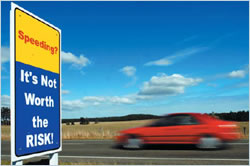
To produce the impacts the GPS seeks to achieve, the NZTA uses the 16 GPS activity classes to group similar types of transport activities and allocate the NLTF funding. These activity classes are:
The GPS describes the types of activity in each activity class. The NZTA allocates funds to the activity classes, demonstrating how much expenditure is expected on each type of activity. Activity class funding is allocated to the highest-priority activities within each activity class.
Table 2: GPS definitions of activity classes
| Activity class | Definition |
|---|---|
| New and improved infrastructure for State highways | Allocate funding for State highway capital improvements and manage the delivery of a State highway improvement programme. |
| Renewal of State highways | Allocate funding for the renewal of existing State highway infrastructure and manage the development and delivery of a renewal programme for existing State highways. These activities are capital expenditure items arising from the deterioration of existing roading infrastructure. The activities are required to minimise the long-term cost of retaining serviceable State highway infrastructure. |
| Maintenance and operation of State highways | Allocate funding for the maintenance and operation of existing State highway infrastructure and for the management, delivery and procurement of operation and maintenance activities. Operation and maintenance activities include operation of traffic signals, maintenance of planted areas, providing information on travel times, alternative routes or safety information to travellers, and patching of small road defects. |
| New and improved infrastructure for local roads | Allocate funding, in addition to funding from approved organisations, for capital improvements to local roads. |
| Renewal of local roads | Allocate funding, in addition to funding from approved organisations, for the renewal of local roading infrastructure and management of the renewal activities. These activities are capital expenditure items arising from the deterioration of existing roading infrastructure. The activities are required to minimise the long term cost of retaining serviceable local roading infrastructure. |
| Maintenance and operation of local roads | Allocate funding, in addition to funding from approved organisations, for the routine maintenance and operation of local roading infrastructure. Maintenance and operation activities include: operation of traffic signals, maintenance of planted areas, providing information on travel times, alternative routes or safety information to travellers and patching of small road defects. |
| Road policing | Allocate funding to road policing activities to be delivered by NZ Police. |
| Public transport services | Allocate funding, in addition to funding from approved organisations, for public road, rail and ferry (except for commercial services) and total mobility transport services. |
| Public transport infrastructure | Allocate funding, in addition to funding from approved organisations, for the renewal and improvement of road and ferry infrastructure to support public transport services. Rail infrastructure is generally excluded from this activity class as the intention is to fund this outside the National Land Transport Fund. |
| Demand management and community programmes | Manage or purchase activities which promote safe and sustainable use of land transport networks and services including:
|
| Walking and cycling facilities | Allocate funding, in addition to funding from approved organisations, to new and improved walking and cycling infrastructure for transport purposes. Walking and cycling facilities include: cycle paths, cycle lanes, new footpaths, facilities for crossing roads, shelters and bicycle parking facilities. |
| Sector training and research | Develop the competence and capacity of the sector to develop and implement land transport programmes by providing information, education and support to organisations and their agents. Allocate funding for research into land transport issues. |
| Domestic sea freight development | Seek proposals, and allocate seed funding, for the development of new or improved coastal shipping freight services and related infrastructure, and for studies of the feasibility of such services in order to increase the freight volumes carried by this transport mode. |
| Rail and sea freight | Allocate funding, in addition to funding from approved organisations, for initiatives in regional land transport plans that encourage the movement of freight by rail and coastal shipping (including barging) instead of by road to reduce the cost of road freight to the community. |
| Transport planning | Allocate funding, in addition to funding from approved organisations, for:
|
| Management of the funding allocation system, including performance monitoring | Manage the allocation and expenditure of funding through the National Land Transport Programme. This includes the development and administration of:
Monitor and report on land transport inputs, activities, impacts and consequences, monitor and enforce taxi compliance, and administer the Crash Analysis System. |
Source: Appendix 2 of Government policy statement on land transport funding(external link), May 2009.
More detail on the activities in the activity classes can be found in the NZTA's Planning, programming and funding manual.
The GPS specifies funding ranges for each activity class for each year between 2009/10 and 2018/19. The NZTA is required to allocate funds to suitable activities within this range, and also to meet the targeted expenditure for the NLTP as a whole.
When developing the NLTP, the NZTA considered the government's priorities for land transport investment and the impacts it wishes to achieve through the use of NLTF, as set out in the GPS. This guided how it would allocate the funds available to each activity class, consistent with the GPS funding ranges. Table 4 illustrates the framework for this work.
Last updated: 6 October 2009